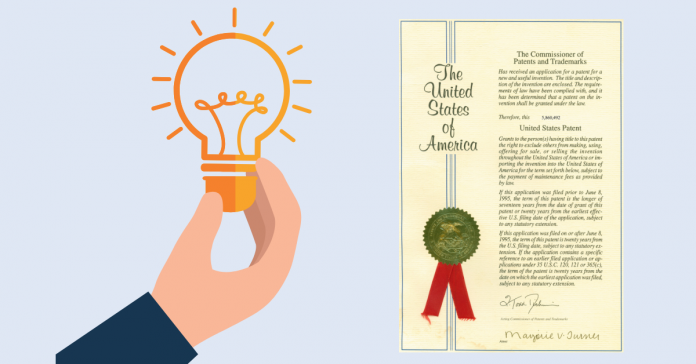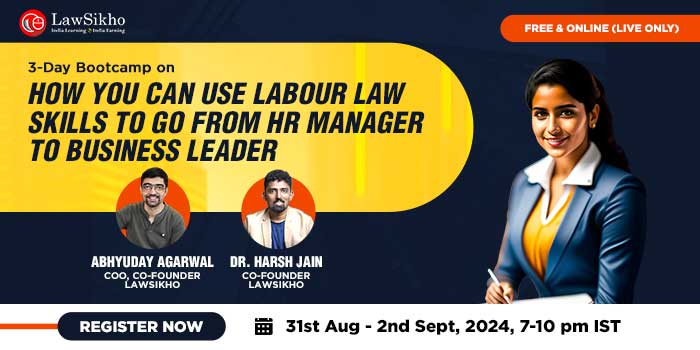

A patent is an exclusive right granted by the Government to the inventor to exclude others to use, make and sell an invention is a specific period of time. A patent is also available for improvement in their previous Invention. The main motto to enact patent law is to encourage inventors to contribute more in their field by awarding them exclusive rights for their inventions. In modern terms, the patent is usually referred to as the right granted to an inventor for his Invention of any new, useful, non-obvious process, machine, article of manufacture, or composition of matter. The word “patent” is referred from a Latin term “patere” which means “to lay open,” i.e. to make available for public inspection. There are three basic tests for any invention to be patentable:
An invention considered as new if, on the date of filing the application, any such invention is not known to the public in any form, i.e. oral, writing, or any other form. Anything shall not be termed as inventive if such a thing is already known to the public domain. The patent has a limited term of 20 years, which is counted from the date of filing of the patent application. A patent is a territorial right. Thus it can only be applied in the country where it has been granted. A patent is a territorial right. Thus it can only be applied in the country where it has been granted. Therefore, any legal action against infringement or infringement of patent rights can only be taken in that country. To obtain patent protection in different countries, each country must apply for a patent. The Patent Cooperation Treaty (PCT) provides a way to file an international patent application in which a patent can be filed through a single patent application in a large number of countries. However, the PCT of a patent remains discretionary of the individual patent office only after the application is filed.

Under the Indian patent law, a patent can be obtained only for an invention which is new and useful. The invention must relate to the machine, article or substance produced by a manufacturer, or the process of manufacture of an article. A patent may also be obtained for innovation of an article or of a process of manufacture. In respect to medicine or drug and certain classes of chemicals, no patent is granted for the substance itself even if it is new, but the process of manufacturing and substance is patentable. The application for a patent must be true and the first inventor or the person who has derived title from him, the right to apply for a patent being assignable.
Some inventions cannot be patented. In the European Patent Convention (EPC) law there is the list of non-patentable subject-matter which includes methods of medical treatment or diagnosis, and new plant or animal varieties. Further information on such fields can be obtained from a patent attorney. Nor many patents be granted for inventions whose exploitation would be contrary to public order or morality (obvious examples being land-mines or letter-bombs).The following are not regarded as inventions, discoveries, innovations, scientific theories and mathematical methods, aesthetic creations, such as art or literature works or art of writing, schemes, rules and methods for performing mental acts, playing games or doing business, presentations of information, computer software.
The first step of the patent in India was Act VI of 1856. The main objective of the legislation was to encourage the respective inventions of new and useful manufactures and to induce inventors to reveal their inventions and make available for public. The Act was repealed by Act IX of 1857 as it had been enacted without the approval of the British Crown. Fresh legislation was enacted for granting ‘exclusive privileges’ was introduced in 1859 as Act XV of 1859. This legislation undergoes specific modifications of the previous legislation, namely, grant of exclusive privileges to useful inventions only, an extension of priority period from 6 months to 12 months. The Act excluded importers from the definition of an inventor. The Act was then amended in 1872, 1883 and 1888.
The Indian Patent and Design Act, 1911 repealed all previous acts. The Patents Act 1970, along with the Patent Rules 1972, came into force on 20 April 1972, replacing the Indian Patent and Design Act 1911. The Patent Act is basically based on the recommendations of the report Justice Ann. The Ayyangar Committee headed by Rajagopala Iyengar. One of the recommendations was the allowance of process patents in relation to inventions related to drugs, drugs, food and chemicals. Again The Patents Act, 1970 was amended by the Patents (Amendment) Act, 2005 regarding extending product patents in all areas of technology including food, medicine, chemicals and microorganisms. Following the amendment, provisions relating to exclusive marketing rights (EMR) have been repealed, and a provision has been introduced to enable the grant of compulsory licenses. Provisions related to pre-grant and anti-post protests have also been introduced.
Sections 3 and 4 of the Indian Patents Act, 1970 clearly mentioned the exclusions regarding what can be patented in India. There are certain criteria which have to be fulfilled to obtain a patent in India. They are:
The most important consideration is to determine whether the Invention relates to a patent subject matter. Sections 3 and 4 of the Patents Act list non-patentable subject matter. Unless the Invention comes under any provision of Section 3 or 4, it means that it consists of a subject for a patent.
Innovation is an important criterion in determining the patent potential of an invention. Under Section 2(l) of the Patent Act , a novelty or new Invention is defined as “no invention or technology published in any document before the date of filing of a patent application, anywhere in the country or the world”. The complete specification, that is, the subject matter has not fallen into the public domain or is not part of state of the art”.
Simply, the novelty requirement basically states that an invention that should never have been published in the public domain. It must be the newest which have no same or similar prior arts.
Under Section 2(ja) of the Patents Act, an inventive step is defined as “the characteristic of an invention that involves technological advancement or is of economic importance or both, as compared to existing knowledge, and invention not obvious to a person skilled in the art.” This means that the invention should not be obvious to a person skilled in the same field where the invention is concerned. It should not be inventive and obvious for a person skilled in the same field.

Industrial applicability is defined in Section 2 (ac) of the Patents Act as “the invention is capable of being made or used in an industry”. This basically means that the Invention cannot exist in the abstract. It must be capable of being applied in any industry, which means that it must have practical utility in respect of patent.
These are statutory criteria for the patent of an invention. In addition, other important criteria for obtaining a patent is the disclo sure of a competent patent. A competent patent disclosure means a patent draft specification must adequately disclose the Invention, so as to enable a person skilled in the same field related to carrying out the Invention with undue efforts.
Collect all information about your Invention such as:
If you worked on the Invention and during the research and development phase, you should have some call lab records which are duly signed with the date by you and the concerned authority.

Drawings and drawings should be designed so that the visual work can be better explained with the invention work. They play an important role in patent applications.
Not all inventions can be patentable, as per the Indian Patent Act there are some inventions which have not been declared patentable (inventions are not patentable).
The next step will be to find out if your Invention meets all patent criteria as per the Indian Patent Act-
If you are at a very early stage in research and development for your Invention, then you can go for a provisional application. It offers the following benefits:
After filing a provisional application, you secure the filing date, which is very important in the patent world. You get 12 months to come up with the complete specification; your patent application will be removed at the end of 12 months.
When you have completed the required documents and your research work is at a level where you can have prototypes and experimental results to prove your inventive move; you can file the complete specification with the patent application.
Filing the provisional specification is an optional step if you are in the stage where you have complete knowledge about your Invention you can go straight to the full specification.
Upon filing the complete specification along with the application for the patent, the application is published 18 months after the first filing.
If you do not wish to wait until the expiration of 18 months from the filing date to publish your patent application, an initial publication request may be made with the prescribed fee. The patent application is usually published early as a one-month form request.
The patent application is scrutinized only after receiving a request for an RFE examination. After receiving this request, the Controller gives your patent application to a patent examiner who examines the patent application such as the various patent eligibility criteria:
The examiner makes the first examination report of the patent application upon a review for the above conditions. This is called patent prosecution. Everything that happens for a patent application before the grant of a patent is usually called patent prosecution.
The first examination report submitted to the Controller by the examiner usually includes prior art (existing documents prior to the filing date) that are similar to the claimed invention and is also reported to the patent applicant.
Most patent applicants will receive some type of objections based on the examination report. The best thing is to analyze the examination report with the patent professional (patent agent) and react to the objections in the examination report.
This is an opportunity for an investor to communicate his novelty over the prior art in examination reports. Inventors and patent agents create and send a test response that tries to prove that their Invention is indeed patentable and meets all patent criteria.
The Controller and the patent applicant is connected for ensuring that all objections raised regarding the invention or application is resolved and the inventor has a fair chance to prove his point and establish novelty and inventive steps on other existing arts.
Upon receiving a patent application in order for grant, it is the first grant for a patent applicant.
Once all patent requirements are met, the application will be placed for the grant. The grant of a patent is notified in the Patent Journal, which is published periodically.
An application for a patent may be opposed by either a prior grant or a subsequent grant by any person on the grounds specified in s 25 (1) and 25 (2) of the former Act. No other grounds stated in the Act can be taken to oppose the patent. Some major opposition grounds, common to both pre-grant and post-grant opposition, are mentioned below:
Pre-Grant Protest: Section 25 (1) of the Patent Act and Rule 55 of the Patent Rules, 2003 provide the procedure to be followed for pre-grant opposition. Pre-grant opposition can be initiated by anyone after the application is published and before the patent is granted. If a request for examination is filed to oppose the application, the Controller considers representation only. If a request for examination has not been made by the applicant, it is possible for the opponent as an interested person to first file a request for examination under Section 11B, and then file a pre-grant opposition.
Post-grant opposition: The procedure is followed to oppose the grant under Section 25 (2) of the Patents Act, 1970 and Rule 55A to 70 of the Patent Rules, 2003 . A Post-grant opposition can be filed by any person interested in any of the specific grounds before a period of one year from the date of publication of the grant of the patent. Unlike a pre-grant protest, a pre-grant protest must be filed by an individual and not by a person. The expression (people interested) is defined under section 2(t) of the Patents Act, 1970 wherein a person/party is engaged, or is conducting research in the same field with which the Invention (which is to be opposed) is concerned.
The Controller of Patents is considered as the principal officer responsible for administering the patent system in India. The Controller is regarded as the overall supervisor of the four Patent Offices in Chennai, Delhi, Mumbai and Kolkata. Since the Controller also acts as the Registrar of Trademarks with the Head Office of the Trade Office in Mumbai, the Controller acts as a patent from his office in Mumbai. Officially, the patent has its head office in Kolkata (Calcutta). Patents granted under the Patents Act and other officers of the Patent Office discharge their functions under the direction or regulation of the Controller.
Patent infringement is a violation which involves the unauthorized use, production, sale, or offer of sale of the subject matter or Invention of another’s patent. There are many different types of patents, such as utility patents, design patents, and plant patents. The basic idea behind patent infringement is that unauthorized parties are not allowed to use patents without the owner’s permission.
When there is infringement of patent, the court generally compares the subject matter covered under the patent with the used subject matter by the “infringer”, infringement occurs when the infringer Uses patent material from in the exact form. Patent infringement is an act of any unauthorized manufacture, sale, or use of a patented invention. Patent infringement occurs directly or indirectly.
Direct patent infringement: The most common form of infringement is direct infringement, where the Invention that infringes patent claims is actually described, or the Invention performs substantially the same function.
Indirect patent infringement: Another form of patent infringement is indirect infringement, which is divided into two types:
Patent infringement generally categorized into two, i.e. literal infringement and infringement in the doctrine of equivalents. The term “literal infringement” means that each element heard in a claim has the same correspondence in the alleged infringement device or process. However, even if there are no literal violations, a claim can be infringed under the doctrine of equivalents if the accused device or some other element of the process performs the same function, in substantially the same way to obtain substantially the same result. The principle of equivalence is a legal rule in most patent systems in the world that allows a court to hold a party liable for patent infringement, even though the infringing instrument or process does not fall within the literal scope of the patent claim, but Still equal to the claimed Invention.
This is not an expansion of coverage of a claim permitted by the principle of equivalence. Rather, the scope of coverage given to the patent owner is limited by
(i) the “prosecution history estoppel” and
(ii) the principle of the prior art.
The analysis of infringement determines whether a claim claimed in a patent “literally reads on the accused infringer’s instrument or process”, or covers the allegedly infringing device in the doctrine of equivalents.
The steps in the analysis are:
The doctrine of equivalents is considered as an equitable doctrine which effectively expands the scope of the claims beyond their literal language to the true scope of the inventor’s contribution to the art. However, there are limitations in the scope of equivalents to which the patent owner is entitled.
Patent infringement lawsuits can result in significantly higher losses than other types of lawsuits. Some laws, such as the Patent Act, allow plaintiffs to recover damages. Patent infringement is the illegal manufacture or usage of an invention or improvement of someone else’s invention or subject matter who owns a patent issued by the Government, without taking the owner’s consent either by consent, license or waiver. Several remedies are available to patent owners in the event of an infringement. Measures available in patent infringement litigation may include monetary relief, equal relief and costs, and attorneys’ fees.
Monetary Relief: Monetary relief in the form of compensatory damages is available to prevent patent infringement:
Equitable relief: Orders are issued by the court to prevent a person from doing anything or Act. Injections are available in two forms:
Patents can provide great value and increased returns to individuals and companies on the investment made in developing new technology. Patenting should be done with an intelligent strategy that aligns business interests to implement the technology with a wide range of options in the search for how, where and when to patent. As an example, with a focus on international considerations and regulations in specific countries, it is possible for a company to achieve significant savings and improve the rights gained using patents.
Students of Lawsikho courses regularly produce writing assignments and work on practical exercises as a part of their coursework and develop themselves in real-life practical skills.
LawSikho has created a telegram group for exchanging legal knowledge, referrals, and various opportunities. You can click on this link and join:
Follow us on Instagram and subscribe to our YouTube channel for more amazing legal content.
